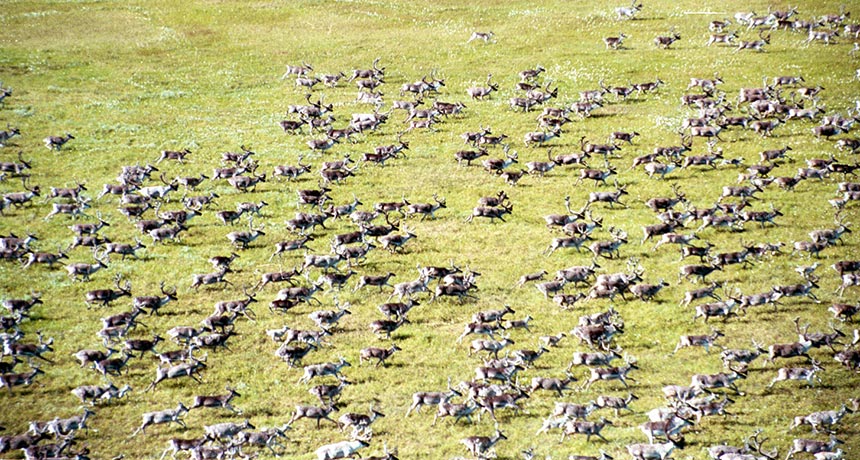World’s largest reindeer population may fall victim to climate change

Whether you call them caribou or reindeer, Rangifer tarandus around the world are on the decline. There are about 2.5 million of these animals scattered in more than 20 populations across the Arctic, and most of those populations are shrinking. And scientists largely don’t know why.
Count the world’s largest population of reindeer, occupying the Taimyr Peninsula of Russia, among those that are disappearing. In 2000, there were around a million of the animals, a high after the fall of the Soviet Union and years of Soviet-sponsored hunting finally ended. Now there are only 600,000, according to Andrey Petrov, of the University of Northern Iowa’s Arctic Center. This huge herd of wild reindeer “crashed and is going down,” Petrov said December 12 at a press conference at the American Geophysical Union’s Fall Meeting in San Francisco. Petrov thinks that he’s found the culprits behind the decline — a combination of the obvious and the unexpected.
The Taimyr reindeer have been well-studied for decades. Airborne surveys monitored them from 1969 to 2009. Scientists attached collars to some animals to track where they traveled. Other researchers watched the herd and its environment via satellite. Researchers knew that the reindeer spent their summers in calving grounds in the north and migrated south to spend the winter in a bit more hospitable territory. Year after year, the reindeer would return to the same spots.
But that has changed, Petrov revealed at the meeting. Climate change is altering the reindeer’s territory. Temperatures have risen, by about 1.5 degrees Celsius on average. Spring now arrives sooner, resulting in rivers unfreezing earlier in the year. The reindeer now have to swim across the rivers instead of walking across ice, Petrov noted. Since 2000, the reindeer’s summer grounds have moved a bit to the east and north, meaning that the animals’ migration route is now longer. Mosquitoes have also become more of a problem, and wildfires have increased in frequency.
Humans aren’t giving the reindeer much of a break either. Migration routes have been blocked by infrastructure, and pollution has become a problem. (The industrial city of Norilsk is located within the animals’ range.)
And that decline in hunting after the fall of the Soviet Union has proven to be a double-edged sword. The end of state-sponsored hunting let the caribou reach record numbers, but it also let the wolf population increase. Wolves are now a big problem for the reindeer, Petrov said.
And there are still some big unknowns. It is unclear what effect subsistence hunting might be having on the Taimyr population. Some scientists think that these hunters might be killing enough animals to be contributing to the quick decline.